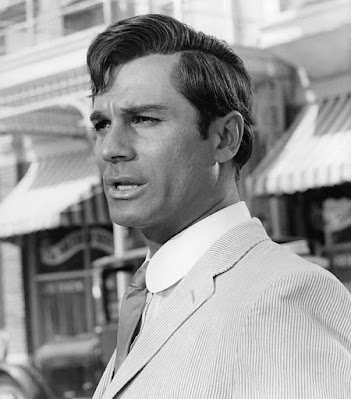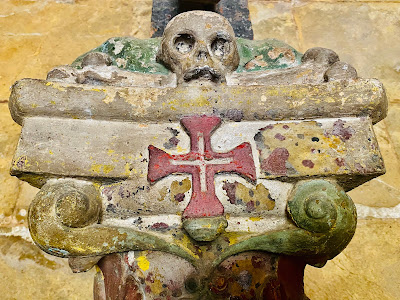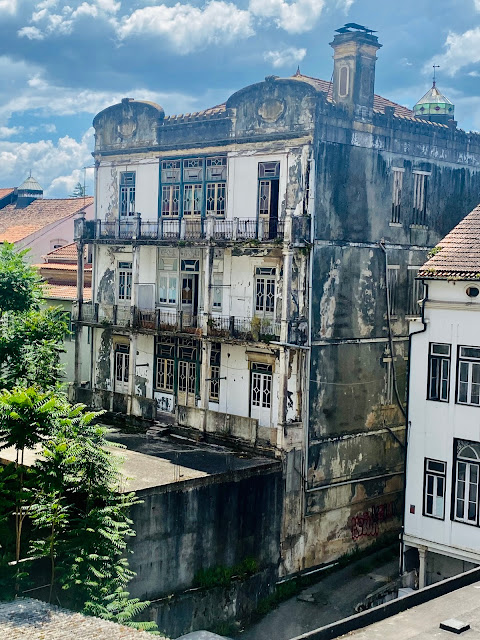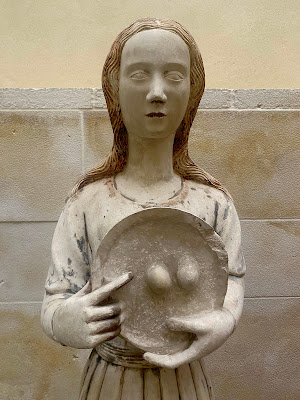 |
| Joaquim Machado de Castro (1731-1822) |
Ancient Roman ruins from the city of Aeminium comprise the foundation of the beautifully lit museum.
Remember
Livia? Her villainy, whether portrayed by Siân Phillips in
I, Claudius or updated for the modern era by Nancy Marchand in
The Sopranos, is timeless.
Most of the museum's extensive collection originated in Coimbra but Machado de Castro created little of it. I can't think of many museums named for artists that honor them rather than exhibit their work.

Arches make great selfie frames for tourists
. . . and friars.
A lot of the sculpture once decorated Coimbra's monastery,
where Inês de Castro lost her head. The museum affords visitors the opportunity to view artistic detail in close-up instead of long shot.
 |
| (14th Century) |
Chris, who's seen a lot of religious art, said depictions of Christ between the crucifixion and resurrection are rare. An American tourist nearby agreed when she saw the shrouded body reclining atop a tomb.
 |
| (14th-15th Centuries) |
Yes, his feet are bloody. Nail wounds in his hands also are visible.
Label text indicates that Roman sentries sleep "impiously" at the base. How does pious sleep look?
Pregnant Marys are rare, too.
During the Renaissance,
João de Ruão established an influential workshop in Coimbra. He illustrated the passion of Christ on a pediment that took him a decade (1530-1540) to sculpt and paint.
Sixteenth century, life-size terra cotta statues depicting the last supper fill an entire room.
Mary Magdalene turned out to be a fey
John the Baptist.
 |
| Christ |
 |
| Judas |
I find Baroque gaudiness appealing.
 |
| Sacred Heart of Jesus (18th Century) |
The museum's cafe offers an excellent view of Coimbra's old cathedral.
I almost never use my phone for anything other than a camera when I'm traveling.
The museum's collection had many fewer paintings.
 |
| "Assumption of the Virgin" (detail) by Vincente Gil (16th Century) |
Valuable and bejeweled artifacts like these were likely once stored in the sacristies of Coimbra's monastery or cathedrals. Janet and I both wondered how the museum acquired such valuable bling.
 |
| Virgin & Child (1330-1336) |
 |
| Monstrance (1810-18) |
Another section of the museum exhibited a variety of household items and furnishings, at least one of which raised our eyebrows.
 |
| Dish (1800-25) |
 |
| Box (1817-35) |
 |
| Embossed Leather |
 |
| Ivory Crucifix from India (17th Century) |
 |
| Decorative Wood Beam Carving (15th Century) |
 |
| Wall Covering (15th Century) |
Museu Nacional de Machado de Castro may not get as many visitors as it deserves because most of the information about it online is in Portuguese. Somebody should change that.








































































